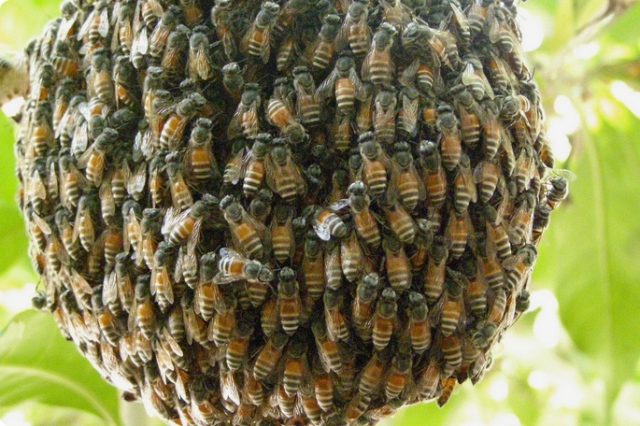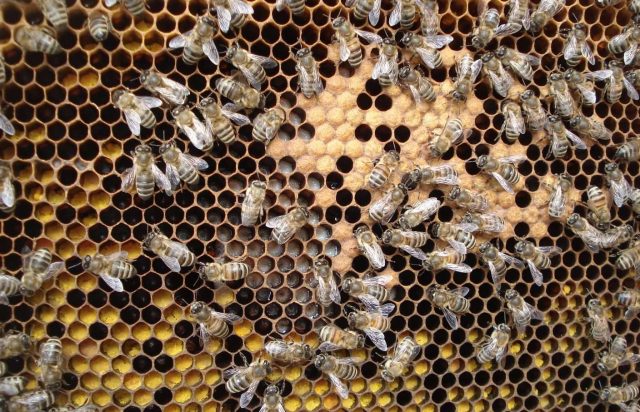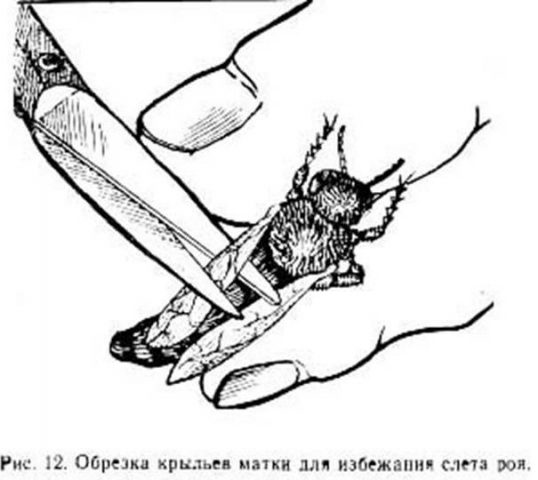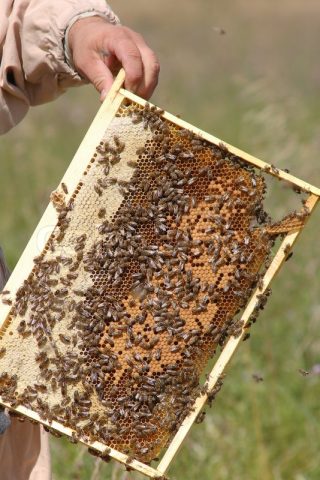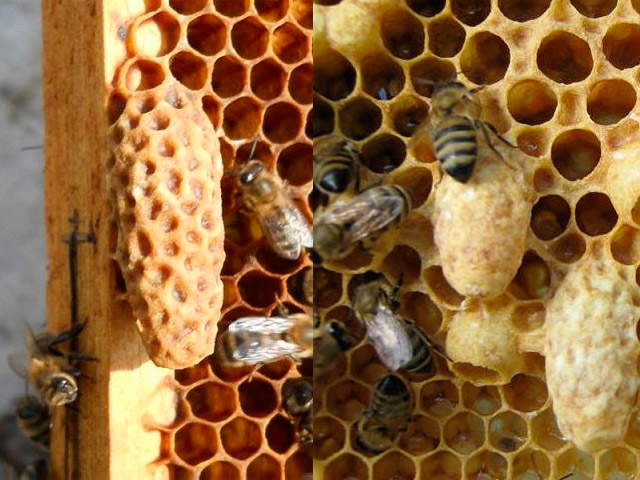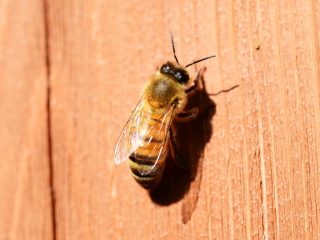Content
Preventing swarming of bees is possible with little effort. To do this, you need to know the first signs of the beginning process and act immediately. Swarming affects almost every beekeeper. There are even anti-combat measures in the apiary that can turn the growth of the family to a benefit.
Why are bees swarming
Swarming is the natural reproduction of insects. It is impossible to completely prevent the bees from swarming, because this is tantamount to destroying the apiary. Among experts, it has been established that swarming is a sign of the health and well-being of a family. However, sometimes bees are forced to leave their home due to negative environmental conditions.
The problem is that swarming is characterized by a lack of control, and as a result, it is difficult for insects to quickly recover from it. This directly affects the results of collecting honey, will help to cope with the phenomenon of anti-fighting techniques in beekeeping.
What happens to bees during the swarming period
In the spring, the bees raise the brood, which allows them to prepare for the harvest and gain sufficient strength. The larvae at this time begin to take up too much space. Honey frames are increasing in number because they are required for pollen and nectar. The beekeeper enlarges the hive with foundation and sushi.
However, the moment comes when there is no more room for laying new eggs. It is then that the bees begin to swarm.
During this period, the family is divided into 2 relatively equal groups. Insects of various ages may be present in the departing swarm. Most of them are bees that have reached 24 days, but 7% of drones can fly away. The "exodus" of the swarm occurs 7 days after the uterus has laid eggs, the mother liquors are still sealed at this moment.
The second swarm consists of queen larvae, brood and some part of adult bees. A week after the sealing of the larvae, a young queen is born, which leads the flight of the bees on day 9. Such a flock can fly with an impressive wind.
The next swarm can fly in a day. Each subsequent flock will contain less and less individuals. At the end of the swarming stage, the remaining queens are destroyed. Then the drones and young queens mate, and life returns to normal.
Anti-fighting beekeeping methods
There are several popular ways to prevent bees from swarming. Each of them is effective in its own way. Beekeepers choose the most convenient one individually. The methods are developed by experienced beekeepers and are named after them.
F. M. Kostylev's method
It is performed in the evening after the completion of the flight by the bees. The swarming family is moved to the gangway. They should be located further away from the hive. The brood is planted with non-swarming bees, providing additional frames. The honey is completely removed.
In the morning, young individuals are returned. The lack of a framework is made up for with foundation. Gangways are placed near the entrance. Over time, the insects will return to their hive. Noticing the absence of honey, they will begin fruitful work.
DeMary's method
Hives are used, consisting of 2 bodies.It is necessary to monitor the nests and expand them in a timely manner. Then the uterus does not stop laying eggs. She has enough space on the honeycomb. The activity of the female is monitored by means of a lattice. It is installed in the lower tier.
Vitvitsky's method
In order not to have to remove the bee colony from the swarm state, the insects are completely immersed in the working process. The nest is divided into 2 parts. Wax bed extensions and honeycomb without contents are used. Bees, having found empty areas, begin to fill them. In such conditions, insects quickly forget about swarming.
How to avoid swarming bees
Prevention of swarming in beekeeping should be started when the following signs are present:
- Reducing the laying of eggs by the queen bee. The process can also stop completely.
- Termination of construction of new combs. The bees gnaw the foundation.
- The emergence of a large number of young animals in the family, not busy. Usually these bees hang in clusters.
- Low productivity and low activity. Almost constant stay in the hive.
- The emergence of swarming queen cells. The number reaches 20 pieces.
The beekeeper needs to constantly monitor changes in the hive in order to timely carry out anti-combat measures.
In order to prevent the beginning of swarming, preventive anti-swarming methods are adopted in beekeeping:
- Elimination of crowding... The bee hive should be spacious and comfortable. If there is a need to expand the territory, then a 2nd floor is installed.
- Constant presence of brood... It is needed to stimulate the uterus to lay eggs regularly.
- Top dressing... It is carried out outside the seasonal period.
- overheat protection... The hives should be protected from direct sunlight during the summer.
Clipping the wings
The anti-combat method was invented quite a long time ago and has been checked many times. If the beekeeper wants to prevent unnecessary migration of bees, he clips the wings of the queen. Also, using this method, you can find out her age. The operation is performed using scissors. It is enough to cut off a third of the wing so that the uterus cannot take off. In this case, the already prepared flock returns home.
The anti-combat method was invented quite a long time ago and has been rechecked many times. If the beekeeper wants to prevent unnecessary migration of bees, he clips the wings of the queen. Also, using this method, you can find out her age. The operation is performed using scissors. It is enough to cut off a third of the wing so that the uterus cannot take off. In this case, the already prepared flock returns home.
Removal of printed brood
With multiple hives, the sealed brood can be moved to the top. The queen and open brood remain at the bottom. The vacated space is filled with foundation and honeycomb. Such a rearrangement will eliminate the overpopulation of the bee colony. There is enough space for the queen to lay new eggs, and the bees have space to collect nectar. After filling the upper part of the hive with honey, experts set up a store on it. Such anti-swelling methods are suitable for bees living in 12-frame hives.
Chess
The method was invented in Canada. To avoid unnecessary swarming, frames with sealed honey and frames with rebuilt honeycombs are staggered above the hive. In this case, the bee colony will not be disturbed. Insects are misled and believe that swarming time has not come.
How to stop swarming bees
The hive in which the swarming begins should be moved to a remote location, and another should be placed here. It needs to add 8 new frames and foundation on the sides. Pour a couple of frames with sushi with sweet syrup. A frame with insect eggs is placed in the central part of the hive. It is important to have time to carry out these manipulations before the start of swarming.
On top of the new hive, plywood with a diaphragm is attached, in which a taphole is made absolutely identical to the old one, so that the bees do not get disoriented. After that, the first hive is installed on the frame. The bees will calmly move to a new home and create fresh queen cells. In this case, the family will split up, but the swarming will not come.
Closing the taphole
If the hive is split into bodies, the frame with the queen is left intact, and the rest of the brood is moved to the upper level. At the same time, it is important to install the grill between the enclosures. Next, you need to supplement the upper body with honeycombs.
The lower part is filled with foundation. The bees will start building a new foundation, not losing sight of the queen. After a few weeks, the possibility of swarming will disappear, then it will be necessary to remove the dividing grid.
How to remove bees from a swarm state
To combat swarming, a step-by-step option is used:
- It is necessary to pull the 3 frames out of the strong socket. Brood and queen should be present on them.
- The frames are transplanted into a new hive.
- Finished combs (2 pcs.) Are placed between the brood. 2 wax layers are placed along the edges.
- The new bee colony is replaced by the old one.
- A young uterus is placed in a strong nest.
How to stop swarming bees if there are already queen cells
It is possible to remove bees from a swarming state in 2 variants in the presence of queen cells using the method of M. A Dernov.
The first way involves planting flying individuals at the location of the bees in the process of swarming. They are placed in an empty, framed hive. It turns to the other side of the old house. Insects begin to fly to the new hive. The mothers get rid of the female and other remaining bees. When the anti-combat method works, everything returns to its previous form. Flying insects will come back.
Second option is to destroy the old uterus. All queen cells are cut out, leaving one. After 5 days, they continue to get rid of new ones. Next, the young uterus is withdrawn. So swarming is completely excluded.
Conclusion
There are many ways to prevent bees from swarming. Experienced beekeepers have developed a number of methods to help stop the process at all stages of formation. To make the task easier, you should adhere to preventive measures and monitor the condition of the hives.
